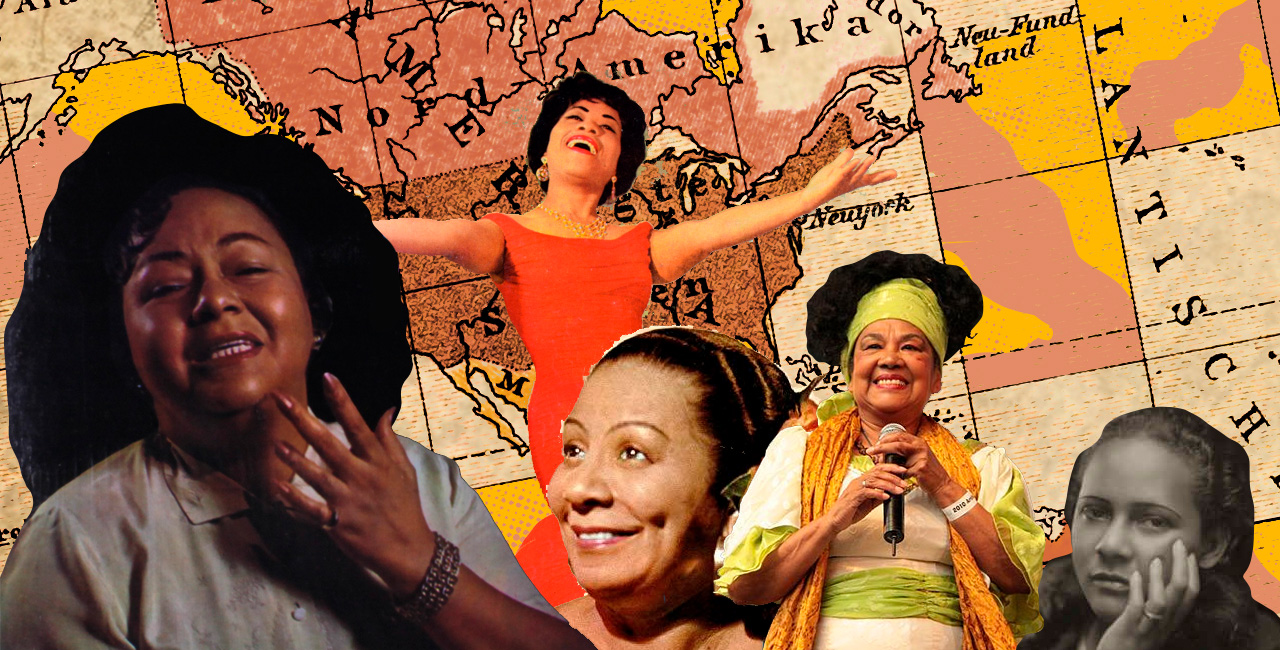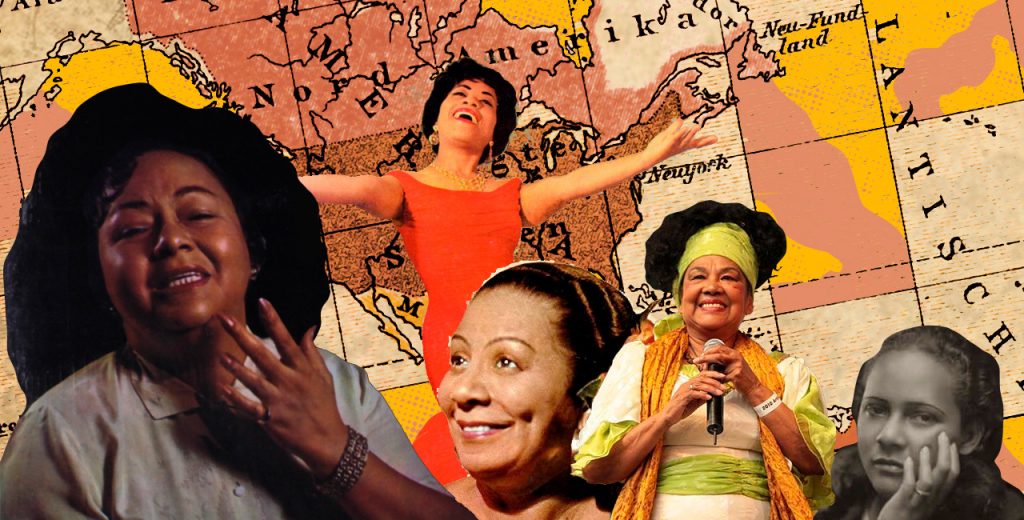Too often in Latin America’s music history, it’s the accomplishments of male artists that are most remembered. The talents—and in some cases, the so-called genius—of men have been recognized and romanticized, particularly when we look back at past eras: The Mexican composer and singer Agustin Lara is beloved for spreading the bolero tradition across the Spanish-speaking world; Ernesto Lecuona is remembered for writing more than 600 classic compositions, and artists like the Cuban singer and drummer Desi Arnaz are permanently etched into the cultural memory for performing songs like “Babalú” on television. It’s no secret that the list of male greats seems to go on endlessly.
Women, on the other hand, have been far too frequently relegated to the sidelines, despite their skills and contributions to the Latin music cannon. This only becomes more evident when we examine how countless female artists helped boost the careers and legacies of men in history’s spotlight. Without Toña La Negra’s powerful voice, the songs of Agustin Lara may not have been as popular. It was Xiomara Alfaro’s dazzling soprano that imbued Ernesto Lecuona “Siboney” with new life. And, the Cuban composer Margarita Lecuona was the brain behind Arnaz’s “Babalú.”
On Women’s History Month, we decided to highlight some of the most impressive women musicians and composers in Latin America across the decades. From the Dominican experimentalist Xiomara Fortuna to the Venezuelan vocalist Magdalena Sanchez, these are women who are beloved in certain parts of the world, but perhaps deserve even greater and broader attention. Below, check out a list of some of the artists we hope continue to be respected and remembered—and whose names should be shared with the same regularity as those of their male counterparts.
Toña La Negra
Credit for spreading the bolero tradition is often ascribed to Lara, but the Mexican singer Toña La Negra actually worked with him in the 1930s and helped to popularize many of his songs. Born in Veracruz and partially of Haitian ancestry, she never had formal training. However, she flaunted her belting power at family parties as a child and quickly proved that she had the raw talent to chase after a musical career. She moved to Mexico City when she was in her 20s, and that’s where she first encountered Lara. He was so floored by the sound of her voice that he wrote “Lamento jarocho” just for her, and the song would become among the most memorable in her three-decade career.
Xiomara Alfaro
When the Cuban singer Xiomara Alfaro passed away last year, many publications remembered the versatility of her voice. She was able to sing almost anything: The radio platform and publication Gladys Palmera noted that her sky-high soprano could interpret Italian standards as easily as Cuban guarachas. While her glory days played out in Havana, she moved to the U.S. and teamed up with the dancer and choreographer Katherine Dunham later in her career. One of her most famous and unforgettable performances is her soaring rendition of Ernesto Lecuona’s “Siboney.”
Totó La Momposina
A dedicated troubadour, Totó La Momposina wandered through villages in her native Colombia, learning traditional dances and local rhythms that continue to inform her music today. She comes from a family of dancers and musicians, and always sought to put folk and indigenous music at the center of her work. Her sounds continue to be ubiquitous in the pop landscape these days, as rappers like Jay Z and Timbaland have sampled her tunes in modern day tracks. (Jay-Z tinkered with Totó’s song ‘La Verdolaga’ on “Blue’s Freestyle/We Family,” while Timbaland’s “Indian Flute’ includes a swatch of “Curura.”
Maria Grever
Legend has it that the Mexican composer Maria Grever wrote her first piece of music—a Christmas carol—at age 4. While we may never know what that exact song sounded like, she went on to craft more than 800 compositions and boleros, cementing her place in history as one of the most prolific writers of the early 20th century. In addition to putting together music that was later performed by Plácido Domingo and Aretha Franklin, Grever was also a talented singer who performed opera during her career.
Margarita Lecuona
In the 1950s, Desi Arnaz became famous for pounding on his drum and letting out a thunderous cry of “”Babalú!” But the woman behind his iconic call was the Havana-born composer Margarita Lecuona. Lecuona seemed to have creativity to spare: She wrote music and played guitar while studying ballet in Cuba, and eventually founded the group the Lecuona Cuban Girls with the singer Olga Luque. Too often in historical playbacks, her name appears in association with other men—her cousin Ernesto Lecuona was also a famed composer, and she later married the Argentine actor Pepe Armil. However, Lecuona’s songs prove she was a force in her own right.
Ruth Fernández
Known as “the soul of Puerto Rico made into song,” Ruth Fernández was both a vocalist and a respected politician. She launched her career by singing on radio stations at the age of 14 and was signed by the band Mingo and His Whoopee Kids. Her music frequently incorporated her Afro-Latinidad; a New York Times obituary lists, “Mi Ochún,” a black woman’s prayer to have a baby, as one of the songs she performed in concert. In 1973, she began her eight-year tenure on Puerto Rico’s Senate, without abandoning her love of singing.
Magdalena Sánchez
The vocalist known as “the Queen of the Venezuelan song” is said to have begun singing at the age of 21 for radio stations for just five bolivars a day. However, her rise coincided with the ascent of television in Venezuela and pretty soon, Sánchez graced multiple programs as both a singer and as an actress. When she would appear, she’d wear traditional llanera costumes, which showed her commitment to bringing Venezuelan folk traditions into the spotlight.
Xiomara Fortuna
A Dominican singer born near the Haitian border, Xiomara Fortuna has seamlessly combined sounds throughout her career. She got her start playing local shows on her home island, and then eventually dove deep into a study of Brazilian music and jazz improvisations. Now, her repertoire offers impressive variety that show what World Music Catalogue called her “exhaustive musicological investigations of the Dominican Republic’s little-known African-rooted folkloric styles,” as well as her ear for jazz and other classic genres.




